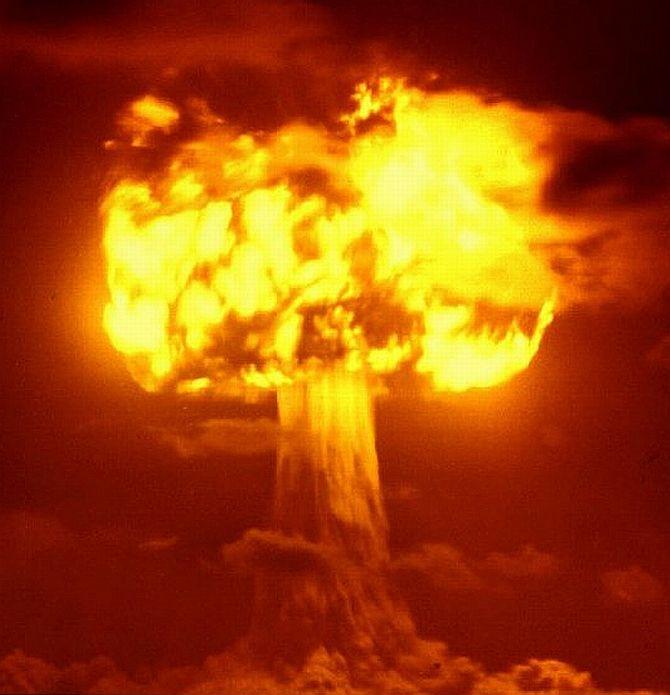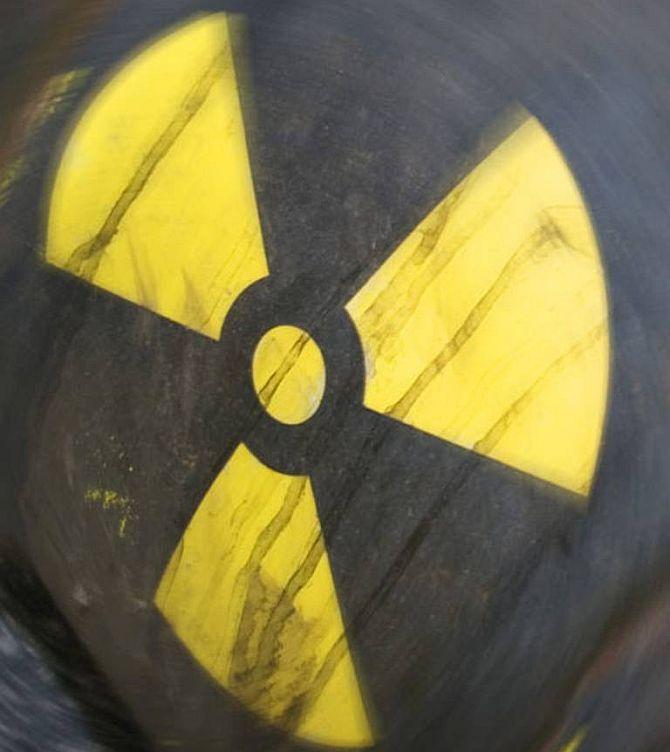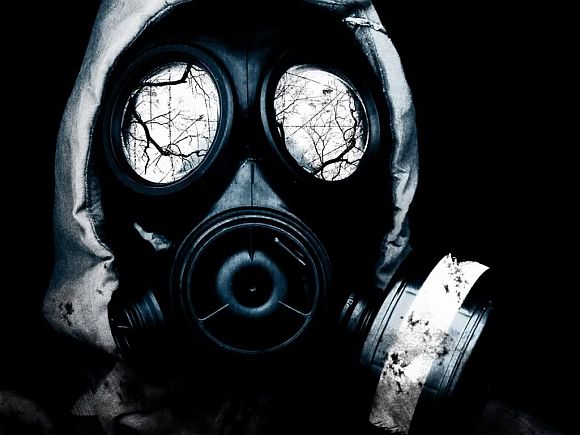
The threat of a nuclear terror strike is very real and lurking nearby, says Vicky Nanjappa
How safe is India from a possible nuclear terror strike?
According to a report titled Nuclear Proliferation Prevention Project prepared by the University of Texas, United States, India is certainly a potential target largely because of the very wide distribution of nuclear and radiological material which is under the radar of various terrorist groups.
The report, released on Thursday, even terms commercial US nuclear reactors as vulnerable to terrorist threats, more than a decade after the 2001 attacks spurred added safety measures.
For Indian agencies, the biggest challenge is to protect radioactive material.
Although no terror group has used the dirty bomb as yet against India, the risk potential is still very high.
Various reports and studies have shown that terrorist groups could try to lay their hands on radioactive material and detonate it using explosives.
According to Intelligence Bureau, groups such as the Lashkar-e-Tayiba and Harkat-ul-Jihadi Islami are capable of carrying out such attacks.
They have dedicated teams to carry out attacks, both nuclear and biological.
...

Intelligence sources say that operatives for such high skilled tasks are being directly trained by the Pakistan Army.
The training begins with a logistical survey in which the material and locations are identified, which post dismantling, are transported to a location of choice. Once the material reaches the target area, it is rigged with explosives to create a dirty bomb.
A Delhi Police officer, who was part of a training camp last month to deal with such threats, told rediff.com that it is necessary that such programmes are conducted in all states.
The training programme included dealing with three types of terrorism -- nuclear, biological and chemical.
The officer says that the biggest challenge is to identify the threat. The officer further adds that the threat perception could be in any form. It could be either through planting a dirty bomb or contaminating the water source.
Intelligence reports state that the scale of a nuclear terror attack could be smaller in nature. This is mainly because it is not easy to carry out large chunks of radioactive material.
According to reports, terrorist could try to target various places where radioactive material is handled. These include research centres, oil exploration industry, hospitals and steel manufacturing industries.
...

There have been instances of radioactive material thefts in India; the first such case was reported in 1998 at the Indira Gandhi Centre for Atomic Research in Chennai. Another incident occurred in 2002 at Assam. Following this, material was stolen from a steel plant in Jamshedpur.
Indian agencies claim that they have done their best to secure radioactive material in all places and the chances of a theft are bleak. However, terrorist groups, according to Intelligence reports, are planning on sourcing such material from other countries and secretly smuggle it into India.
Russia has been identified as a potential illegal market for such material, according to IB reports.
Several Pakistan groups under Inter Services Intelligence’s patronage have been sourcing this material from illegal markets and could look to smuggle it into India in the time to come.
Recently, the police unearthed a plot to target nuclear facilities. Some of those arrested had claimed that they had surveyed the Kaiga nuclear plant in Karnataka and planned on carrying out explosions there.
Experts state that an explosion at a nuclear power plant would cause a great panic, but there would be no damage to the plant considering the high level of safety attached to it. However, the significance of such an attack would be immense as the security apparatus leading up to the plant would come under question.
There have been several inputs from intelligence agencies about nuclear terror. The National Disaster Management Authority has trained 100 personnel so far to counter this problem.
Click on NEXT to go further...
...